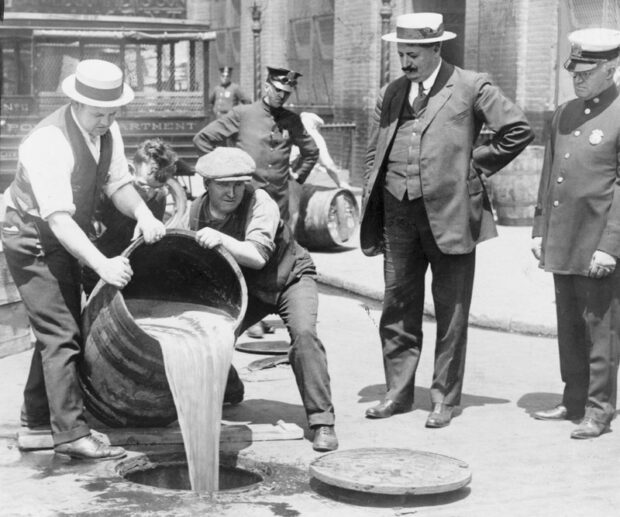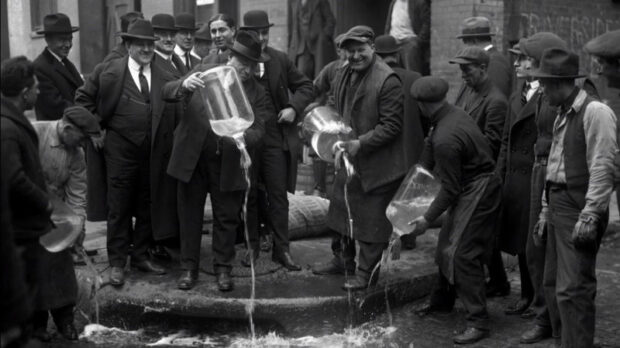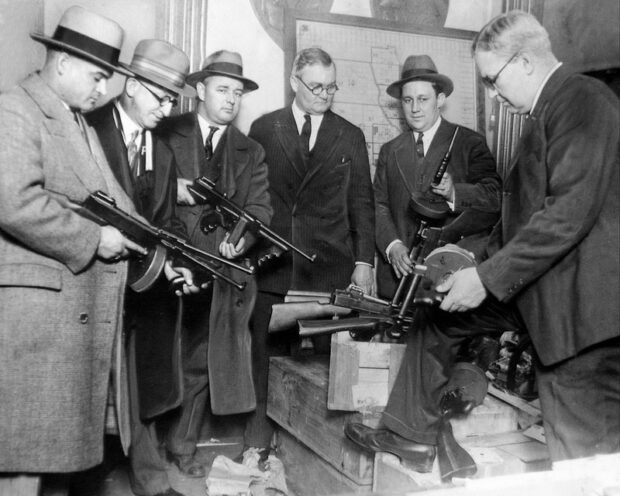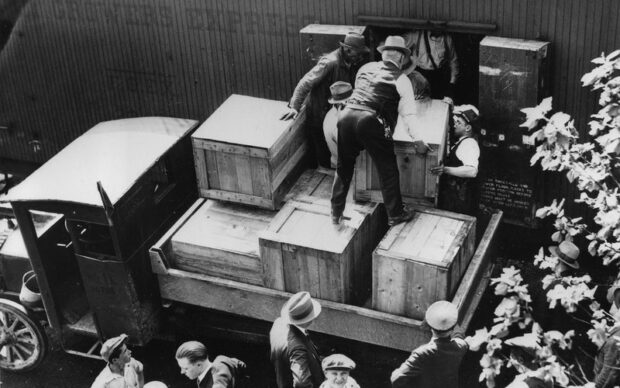
The ban on alcohol has existed in many parts of the United States since the 19th century. In this way, opponents of alcohol tried to fight alcoholism, domestic violence, corruption, and moral decay.
However, only after the United States entered World War I did the anti-alcohol community gather enough support to ratify the Eighteenth Amendment in 46 of the 48 states.
A year after the amendment, in January 1920, the era of prohibition began, lasting 13 years and having a huge impact on the Mafia. And Mussolini’s rise to power in Italy at the beginning of the decade encouraged significant emigration from Italy to the United States, feeding crime syndicates with new hands.
Despite the ban, the population’s thirst for alcohol has not disappeared. This, in turn, created a strange environment where people tolerated crime because it guaranteed the supply of alcohol. Even among the police and politicians, there were drink enthusiasts, which only motivated the mafia to expand its operations.
In the first three months alone, half a million dollars’ worth of whiskey was stolen from government warehouses. And over 900,000 cases of alcohol were delivered to the borders of the cities, while the authorities tried in vain to enforce the law.
READ: How New York City Barely Survived the Worst Night of Its History
Already in the early days of the Prohibition era, criminal gangs and corrupt politicians saw an opportunity to make huge profits. This led to illegal imports of alcohol from Canada, the Caribbean and the Midwest, where illegal distilleries continued to operate.
The proceeds of the illicit alcohol trade were many times greater than traditional criminal activity. This, in turn, encouraged the organization of gangs into families that are more like traditional companies.
In the mafia, leaders, lawyers, drivers, security forces and other positions associated with legitimate business have emerged.

In the first six months of the 20th year, the Federal Government filed over 7,000 violations of the law. In order to reduce the amount of alcohol produced, the authorities had to poison technical alcohol. In response, the criminals hired chemists to make alcohol usable again. At the same time, the Government forced the addition of even more lethal substances in production. In particular, methylalcohol, which has killed thousands of people in 13 years.
In the early years, there was talk that prohibition did not work and did more harm than good. And alcohol consumption continued, but without advertising. In New York, for example, by the mid-20s, there were 30,000 to 100,000 underground bars and clubs with alcohol. And the profits of the criminals reached hundreds of millions and billions of dollars.
Historians believe that about 75% of alcohol consumed during the ban was transported by river from Detroit and Canada. By some accounts, up to 40 cases of alcohol were transported in special “torpedoes” with submarine cables. Some used motorboats and a network of “monitors” to monitor police action. And in the winter, smugglers loaded the whiskey into the sleigh and dragged it on the ice.
READ: America’s Most Famous Park: Central Park in New York
Ordinary people hid strong drinks in many tricky ways. Some used a cane with a cavity inside, others masked flasks for books. And a certain drinker ordered from the tailor a special costume that could accommodate up to twelve bottles.

As a piece of cake, the Italian mafia started a war between the families over total control. They fought Irish and Jewish gangs for the distribution of alcohol in various territories.
In Chicago, Al Capone and his family brutalized the northern side of the gang. In New York, Frankie Yale fought the White Hand gang. At the end of the decade, two major factions formed, one under Joe Masseria and the other under Salvatore Maranzano.
After Joe’s death in 1931, Maranzano divided New York City into five families, becoming the first leader of the American mob. It has enacted a code of laws, established internal units and structures, and established procedures for conflict resolution.
Salvatore’s mistake was to call himself the boss of all the bosses and ask the families to pay tribute. Just six months later, he was killed on behalf of Charles Luciano.

After the assassination of Maranzano, Lucano founded the “Commission”, where the bosses of the most influential families had an equal say in matters and disputes. Thus began the era of peace and prosperity for the American mafia.
In March 1933, President Franklin Roosevelt signed a law legalizing the sale of beer and wine with an alcohol content of less than 3.2%. In December of the same year, the Twenty-First Amendment was ratified, ending national prohibition.
Since then, the local authorities have made their own decisions about alcohol restrictions. So today you can still find a lot of districts and counties with a total or partial ban on alcohol.
READ: 11 Best Films Featuring in New York Central Park
The 1920s and early 1930s were a unique time in American history. This period had a significant impact on art and culture. Vast layers of cinema, literature, and even design were formed in an atmosphere of prohibition and criminal wars. In turn, such popularization led to the evolution of Mafia perception.
This word added a romantic aspect to organized crime. The image of the Mafia influenced iconic films such as “The Godfather”. And we wouldn’t be waiting for a Mafia remake today if it wasn’t for that weird period in history.
Curiously, there was not much in the Prohibition Era of Games. From the nearest time we can only wait for the tactical Empire of Sin. On the other hand, among TV series and movies, you can look at “The Underground Empire”, “The Enemies of Society” with Johnny Depp, “The Law of the Night” and the documentary “The Prohibition”.
Like us on Facebook for more stories like this: